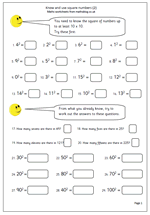 What have we got next week? we have the second in our multiplying by 3, 4, 6, 8 and 10 worksheets, suitable for year 4 children or those who are beginning to know their tables. The best way to learn tables is to recite them out loud eg ‘4 times 3 is 12, then shorten it to, ‘4 3s are 12’, with the ultimate aim of being able to say the product for any two single digits without having to work it out – just like knowing your own name!
What have we got next week? we have the second in our multiplying by 3, 4, 6, 8 and 10 worksheets, suitable for year 4 children or those who are beginning to know their tables. The best way to learn tables is to recite them out loud eg ‘4 times 3 is 12, then shorten it to, ‘4 3s are 12’, with the ultimate aim of being able to say the product for any two single digits without having to work it out – just like knowing your own name!
If you want further practice on tables then our calculator games are ideal. The idea of the game is to make a row of 4 in any direction before your opponent. Take it in turns to use the calculator to multiple chosen numbers to match numbers on the grid. This is excellent practice at multiplying and dividing by 5 mentally and then using the calculator to check answers. Suitable for year 3 upwards.
For Year 6 we have a probability page that looks at writing the probability of events happening as a fraction or a decimal fraction.
For example, the probability of getting a head when tossing a coin is 1/2, but this can also be written as 0.5. That one is easy, but many others are much trickier.









